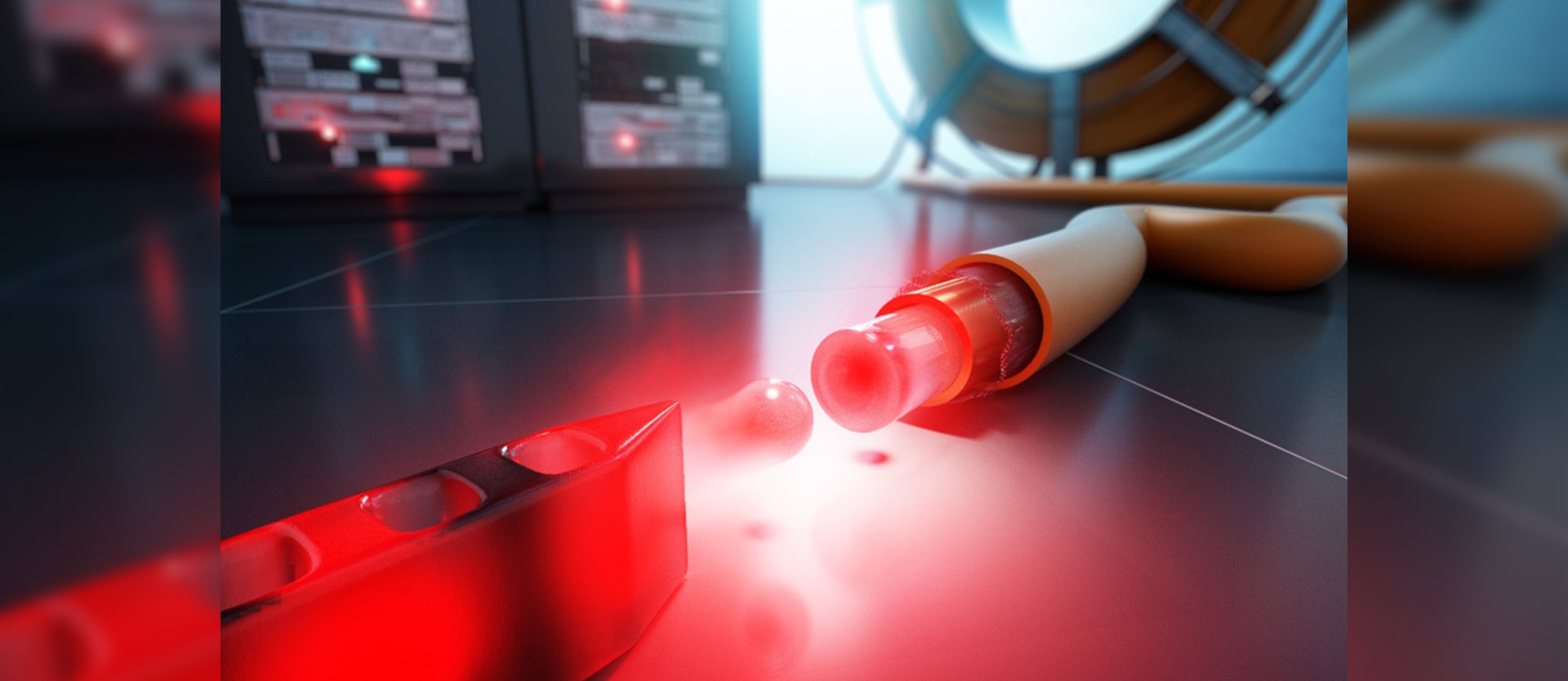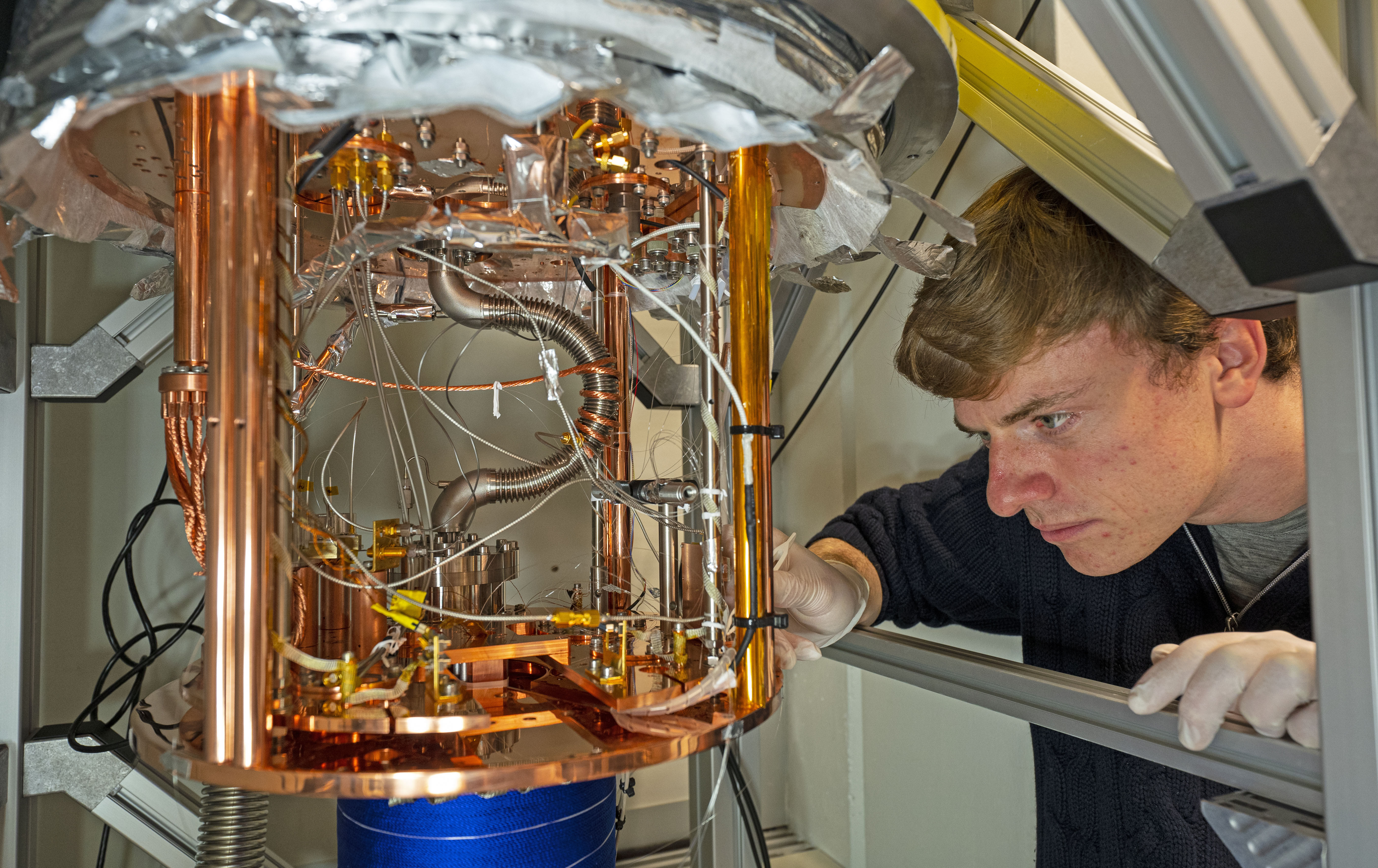
A light amplifier in nano format
However, this resonator did not consist of mirrors like most optical resonators, but of a specific structure of crystalline silicon: regularly arranged holes in the material that are only a few nanometres (millionths of a millimetre) small. The entire unit measured only a few micrometres and contained only a few dozen erbium atoms. The researchers coupled it to an optical fibre that allowed laser light to enter the so-called nanophotonic resonator to excite the atoms. "In this way, we were able to accomplish the emission of individual photons with the desired characteristics", explains Andreas Gritsch.

Andreas Gritsch at the cryostat, in which the silicon doped with erbium atoms is cooled down to a few degrees above absolute zero. Photo: Thorsten Naeser
The physicist and his team have thus created a possibility to specifically generate qubits for the transport of quantum information. And: "The fact that this is possible in crystalline silicon offers an additional opportunity for the realisation of quantum networks," says Reiserer, "because this material has been used for decades to produce classic semiconductor elements, for example microchips for computers, smartphones or navigation devices." The required manufacturing techniques and processes are technically mature and established in the semiconductor industry. "This means that for quantum technology applications, such as the construction of quantum networks, silicon crystals can also be produced in high quality and purity," emphasises Reiserer – and quite cheaply, too.
There is also another advantage of the system developed by the MPQ and TUM scientists: the excellent optical properties of the erbium atoms embedded in silicon appear – thanks to a special type of preparation – not only at absolute zero temperature at minus 273 degrees Celsius, but also at up to eight degrees above this temperature mark. "And these few degrees make a big difference in practice," explains Reiserer: "Because such temperatures are technologically easy to achieve by cooling in a cryostat with liquid helium." This helps to pave the way towards technical applications.
Totally tap-proof
These could be of great interest e.g. to financial institutions, medical facilities or government agencies, where sensitive personal data or classified information is handled. While today even the best encryption cannot guarantee complete security, a quantum network would offer perfect data protection: as soon as an eavesdropper tried to intercept the information transmitted by prepared photons, their quantum properties would be lost and the data would become unusable.
Original publication
Andreas Gritsch, Alexander Ulanowski, and Andreas Reiserer
Purcell enhancement of single-photon emitters in silicon
Optica 10, Issue 6, pp. 783-789 (2023)









